Featured Articles
Going Nuts: A Rough and Dirty Field Guide To Foraging For Food
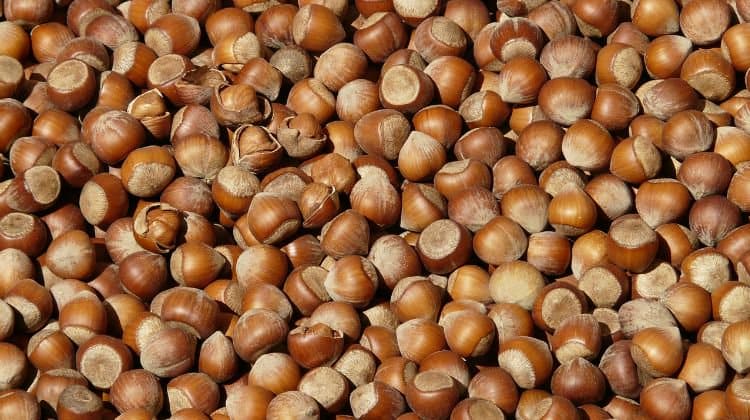
A fully stocked pantry is a modern convenience that may not always be at our disposal. It’s a sad thought, but someday if things really got bad, restaurants, kitchens, grocery stores and well-supplied larders will be as rare a convenience as they are a wonderful one. It could be because you go cripplingly broke and end up on the street, it could be because of a major environmental disaster, political/social unrest, the collapse of civilization as we know it or the zombie apocalypse – no matter the cause, it’s good to understand different ways of collecting, scavenging, foraging, harvesting, or otherwise gathering food to sustain yourself.
A Rough and Dirty Field Guide To Foraging For Food
You’re going to need nuts. No, get your mind out of the gutter… I’m talking about the hard-shelled snacks that grow naturally in lots of different environments and climates. They are light, healthy, and packed with protein to keep you plugging along and to maintain your energy. Nuts are awesome.
In the times of hunter gatherers, when humans roamed the land and relied on their tracking, trapping, hunting and foraging skills to survive, seeds and nuts accounted for half of people’s diets. That is huge! Imagine if half of everything you ate today was nuts? You’d go nuts (at least I know I would).
Now, I’m not suggesting you go full hunter gatherer as soon as food starts getting tight – don’t get me wrong. I’m only suggesting that everyone understand the basic concepts behind foraging for and identifying edible nuts in the wild in case of an emergency. Of course, it would also be handy to understand the best ways of finding and foraging for edible plants, fruits, veggies and roots – but that is all for another article. What follows will specifically focus on nuts.
The Nuts
Believe it or not, nuts are technically fruits. People who regularly consume nuts are less likely to develop physical health issues like coronary heart disease, and because of this, many dietitians recommend that nuts be included in every diet. One study even found that people who eat nuts are more likely to live 1-3 years longer than people who do not. So not only is understanding how to forage for nuts an important skill, it is also a healthy one.
Acorns:
No matter how many times the old wives tale is repeated, it is never going to become true: acorns are not poisonous. If your mother or grandmother told you that it’s because they didn’t want you to try and eat one and choke on it to death. There are over 60 species of oak trees in North America. Every single one of them produces edible acorns (which taste very similar to chestnuts), making them one of the most abundant and easy to collect nuts around.
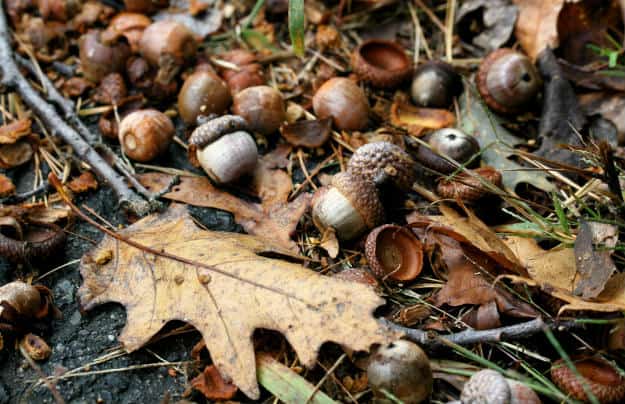
Acorns contain a complete vegetable protein and are full of energy-rich carbohydrates. Acorns have a pretty iconic shape and should be pretty easy to identify. After collecting them, remove any that appear to have been nibbled on or affected by mold or insects, remove the cap and shell them. After this they can be eaten raw, or roasted.
Beechnuts:
Beech trees are easily recognizable for their dark grey bark that is very easy to scratch and write in. They can be found on both the East and the West Coasts. In the fall when the beech trees turn a vibrant orange-gold color, burs along the branches mature and open up, exposing triangular nuts which will eventually fall to the ground.
There is a thin shell on beechnuts that can be easily peeled back with a fingernail and their flesh is very nutritious, containing over 20% protein. Be warned: competition for beechnuts is extremely fierce. You will be competing against hungry squirrels and racoons, so be prepared.
Chestnuts/Chinquapins:
Years ago, the trees that produce chestnuts were vastly abundant throughout the United States, and gathering baskets full of chestnuts was an autumn ritual. Sadly, a fungus carried overseas to the US devastated the population of these trees, and today your chances of finding a nut-bearing American chestnut tree are next to nothing…
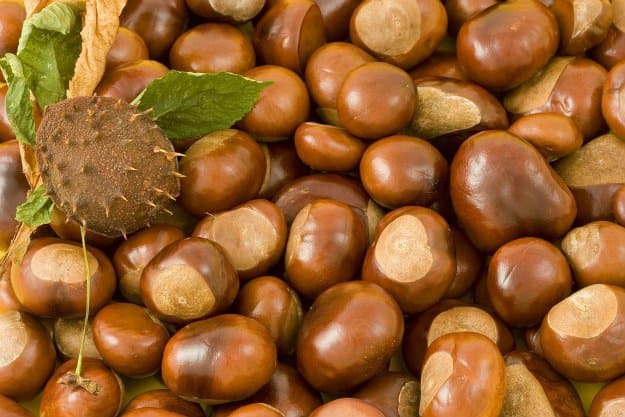
However, it would be remiss of me to not cover chestnuts. Because although chestnut trees are exceptionally rare in America today, chinquapins are a cousin of them, and exhibit almost identical properties. These trees produce small sweet chestnut-like nuts that are protected by a hard, prickly shell. These nuts can be eaten raw, or you can roast them or boil them.
Black Walnuts:
Across the eastern half of the US you can find American black Walnut trees. The trees are more widely sought after for their wood than their nuts though – because the wood from these beautiful trees is commonly used in gunstocks, and in fact, during WWII so many of these trees were felled that the national population of black walnut trees plummeted and never returned to where it had been. These nuts must be collected as soon after they fall from the tree. First, because the squirrels will try very hard to beat you to them, and also because you need to remove the husk of the nut before the flesh rots and brown juice saturates the shell.
Butternuts:
Also known as the white walnut, these nuts are closely related to black walnuts. They can be found in the northern North America: in parts of New England and Canada. The trees are very similar to black walnut trees, the biggest difference being the bark which is smoother and lighter on the butternut tree. The nuts look like tiny green eggs covered in brown hairs that can seriously stain skin and clothes. Remove the husk and get at the oval shaped nut inside.
Hickory Nuts:
There are 20 different types of Hickory tree in the United States, some produce delicious sweet fruit, others produce bitter tasting nuts that are almost all shell. And it can be difficult to differentiate between the two of them. But because the tree is so abundant throughout the country, this is a very good nut to be on the lookout for when you are foraging. Depending on which type of Hickory you are harvesting from, you might get a nut that has a thick shell and meaty nut, or one that produces thin shelled nuts. Either way they are edible and very tasty.
Pecans:
Pecans are special to America. They just taste like home. And besides being culturally important to our cuisine (pecan pie mmmmm) they are very meaty, and full of nutrition. Native Americans are attributed with having spread the pecan tree throughout America.
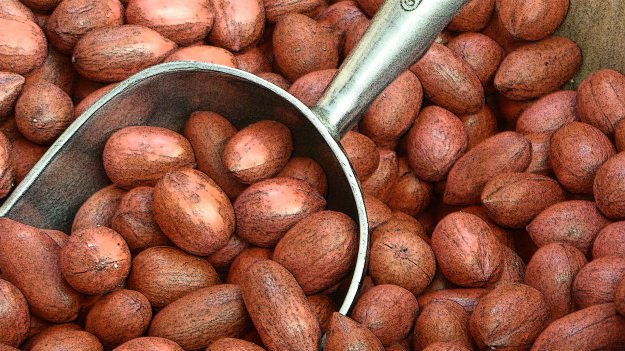
It is said that they planted it along the rivers that they traveled along. Pecans bear in groups of 3-10 and are oval and green husked. Pecan trees produce massive amounts of fruit. So, when autumn rolls around and the matured brown nuts start falling to the ground, there are lots of them.
Pine Nuts:
There are a lot of pine trees scattered throughout the western United States. That is a good thing for nut foragers because there isn’t a whole lot else in the way of nut bearing plants out there. Luckily, some of the pine trees in the west can produce plentiful amounts of fruit.
The largest and tastiest of these is produced by the pinion pine tree, which grows prolifically throughout the southwest. Their nuts are produced by their pinecones, and you can find them littering the ground in autumn. Unfortunately, pinyon pines only bear fruit rarely – once every six or seven years. Which means if you find yourself foraging with an abundance of pinion pine nuts, consider yourself extremely lucky.
Preparing your Nuts
Most nuts can be consumed raw. But sometimes raw wild nuts can have a very bitter taste. Raw that is not the only way to enjoy them! Nuts are popularly roasted, which is a simple process:
- Remove the shells
- Toast the nuts lightly before chopping them into small pieces
- Heat over fire or in oven (at 350-degrees) until they turn golden brown.
Some people roast their nuts with salt, or sugar – the choice is yours! And obviously it depends on what you have on hand.
Another easy way to prepare them is to just bake them. Remove the shells, lightly sprinkle some salt and olive oil over the nuts and bake in oven or over a fire. This is a simple, fast, easy way of cooking your nuts and changing the flavor.
Of course, you could also make nut butter. You know, like peanut-butter. Grind and mash up the nuts with a mortar and pestle, or some smooth stones until they start to exhibit a creamy texture. Making your own nut butter is very simple. You can also make different kinds: pecan butter, walnut butter, hickory nut butter, etc.
Going Nuts
No one is going to go out and voluntarily dedicate half of their diet to wild, foraged nuts. In our modern world, that would just take too much energy and wouldn’t yield enough benefits. But should things start turning south, or should you ever get stuck out in the woods alone, stranded, understanding how to forage for nuts is a very useful skill.
Preparation is key to surviving any circumstances. Preparing yourself with the knowledge of how to forage for nuts is a great step towards ensuring your own survival. It puts you a step ahead of the rest, and gives you one more foothold by which you can stay alive. Nuts are important. Get some.
Up Next: 12 Budget-Friendly Must-Haves For Every Beginner Gardener
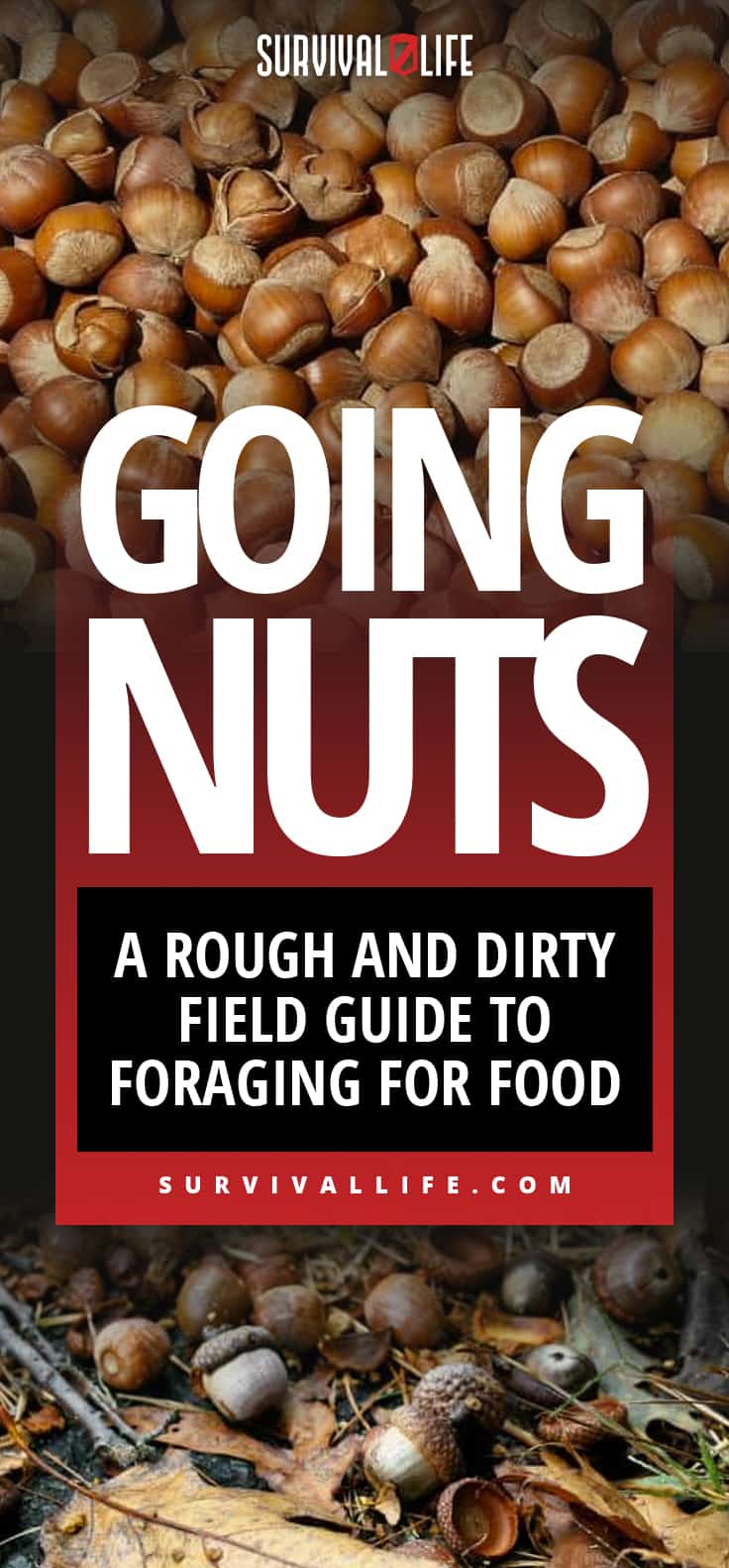
Did you find this post on foraging for nuts useful? Let us know in the comment section below.
If you’re looking for useful survival gear that you can’t make at home, check out the Survival Life Store!
Looking for other foraging products? Check out these options:
- If you want a more comprehensive foraging guide check out The Complete Guide to Edible Wild Plants, Mushrooms, Fruits, and Nuts.
- Do you want to be able to prepare and cook the things you’ve foraged for? The Bushcraft Field Guide to Trapping, Gathering, and Cooking in the Wild is for you!
Featured image via pixabay
-

 Do It Yourself7 months ago
Do It Yourself7 months agoParacord Projects | 36 Cool Paracord Ideas For Your Paracord Survival Projects
-

 Do It Yourself9 months ago
Do It Yourself9 months agoHow To Make Paracord Survival Bracelets | DIY Survival Prepping
-

 Do It Yourself9 months ago
Do It Yourself9 months ago21 Home Remedies For Toothache Pain Relief
-

 Do It Yourself10 months ago
Do It Yourself10 months agoSurvival DIY: How To Melt Aluminum Cans For Casting
-

 Exports8 months ago
Exports8 months agoAre Switchblades Legal? Knife Laws By State


liz
March 5, 2017 at 5:39 PM
Acorns cannot be eaten raw they need and I mean NEED to be, shelled, dried, pounded into flour and leached of their tannins in several changes of cold water before eating,or as ray mears did roasted, pounded and put in a mosquito headnet and leached in a moving stream. This takes time but the end product can be made into bread or acorn mush. They are bitter as hell and leave your mouth feeling dry and pasty if you eat them raw. Dont do it. Trust me. Even if you mananged to get past the godawful taste of the raw acorn those tannins i mentioned before? Yeah, enjoy the violent stomach cramps and diarrhea.
Pingback: Wise Food Storage For Long-Term Survival
Pingback: 17 Wild Edibles You Should Know | Homesteading And Survival Skills – Homestead Survivalism
Pingback: 10 Martial Law Survival Tactics You Need To Know Now
Pingback: 7 Survival Uses Of Pine Resin You Need To Know | Survival Life